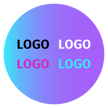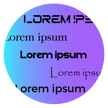Decoding Visual Identity: Unraveling its Significance for Business and the Risks Entrepreneurs Face Without Investment
Have you noticed that as a consumer of various goods and services, you often choose companies whose visual identity is strong and clearly perceptible? The business image is like a company's mirror - it's what we see at first glance and what leaves the first impression. It's not just creating a beautiful illusion. It's a strategic investment that can have a significant impact on the success of a company. Whether your business is considered a veteran in the market or you are a newly minted entrepreneur, the development of new technologies and the rapidly changing dynamics of the market impose increasing demands not only to create a quality product or service but also to establish a recognizable and positively evaluated business image. The truth is that a significant number of entrepreneurs economize and do not allocate investments to create their business's visual identity. However, in many cases, this can turn out to be not savings but lost money. Let's analyze what visual identity is, its significance for business, and what are entrepreneurs risking by not allocating funds for its creation?


WHAT IS A BRAND BOOK?
A Brand Book, also known as brand guidelines or a brand manual, is a document that provides detailed information and instructions on how a brand should be represented. It serves as a comprehensive reference guide for anyone involved in creating content or materials associated with the brand, both internally and externally. A Brand Book can be highly individualized for each business based on its needs. The main elements considered as fundamental in a Brand Book include the following:


Logo operation guide - Safety zone of the logo.


Color palette - The designer selects up to 5 primary colors for your business, which are used to create your public image and do not deviate into other colors.


Logo color variations - logo color variations are prepared according to your brand's color palette.


Website favicon - A favicon is a little icon displayed in the browser's address bar next to the website's name.


Typography - these are your business fonts. Depending on the business specifics, 2-5 business fonts are selected.
The Brand Book can vary widely and include additional elements, such as:
Imagery - Instructions on the types of images that are consistent with the brand, as well as guidelines on photography style, image resolution, and usage.
Voice and Tone - If applicable, guidance on the brand's communication style, including the tone of voice, messaging style, and language considerations.
Usage Guidelines - Instructions on how to apply the brand across different mediums, such as print materials, digital platforms, merchandise, and more.
Brand History and Values - Background information on the brand, its history, and core values. This helps internal and external stakeholders understand the brand's ethos.
It would be much simpler to dispel the hovering cloud of question marks and move on to specific, business-relevant Brand Book attributes, so here are a few of them:
Social media templates – these are customizable social media banner templates that you can easily modify using the CANVA program (an easy-to-understand and intuitive tool that doesn't require programming knowledge). For visual diversity, we recommend to create at least 3 social media templates. The template structure can be tailored to your business needs. These templates will save you the trouble of thinking about color schemes, fonts, and visual structure while maintaining style consistency. You only need to change the template's textual information and upload the desired image.


Social media covers – a designer will create you a social media profile and cover photos.
Business card template – just consider whether you need a double-sided or single-sided business card design?
Business proposal, Invoice, or Technical Specification templates - Depending on your needs, templates are created in CANVA, WORD, or AI programs.
Pattern - corporate patterns are designed for photo walls, prints on adhesive tapes, mugs, gift bags, social media, web design elements, and more, tailored to give your business a unique and recognizable look.
The design of branded clothing - based on individual needs, designers create visualizations of branded clothing and prepare print files.
The design of accessories – design is created for branded accessories, such as mugs, gift bags, packaging boxes, pens, envelopes, car decals, corporate gifts, and other elements, tailored to individual needs, and prepare print files for production.
Illustrations – they can be created in various styles according to individual needs. For example, illustrations can be used to create a unique interior, applied to car decals, menus, business catalogs, business card design, and more.
Packaging design - design is created for your products.
Print design - design of catalogs, brochures, posters, gift vouchers, and other print materials.
Digital design - the design of banners, newsletters, and other digital assets.
IMPORTANCE OF THE BUSINESS IMAGE
The business image, often referred to as the brand image, is crucial for several reasons:
First Impressions - Your business image is often the first impression that potential customers have of your company. It includes your logo, visual elements, and overall presentation. A positive and professional image can create a favorable first impression, while a weak or inconsistent image may deter potential customers.


Credibility and Trust - A strong and consistent business image contributes to credibility and trust. When customers see a cohesive and professional brand, they are more likely to trust the products or services you offer. Trust is a fundamental factor in building lasting relationships with customers.




Differentiation - In competitive markets, a distinct business image helps your company stand out from the competition. A unique and well-defined brand image sets you apart and makes your business more memorable in the minds of consumers.


Customer Loyalty - When customers have a positive experience with your brand and consistently see a strong, trustworthy image, they are more likely to become repeat customers and brand advocates.


Marketing and Advertising Effectiveness - A well-established business image provides a foundation for effective marketing and advertising. Consistent branding across various channels helps in creating a cohesive message and reinforces your brand identity.


Employee Morale and Recruitment - A positive business image is not only important for customers but also for employees. A strong brand can enhance employee morale and pride in their work. It can also attract top talent when recruiting, as people are often drawn to companies with a positive and reputable image.


Value Perception - The perception of your business image can influence how customers perceive the value of your products or services. A strong and positive image can command higher prices and position your offerings as premium or high-quality.


Adaptability and Expansion - As your business grows or introduces new products or services, a consistent brand image helps maintain continuity and coherence, making it easier for customers to accept and embrace changes.
In summary, a strong business image is crucial for building trust, creating differentiation, fostering customer loyalty, and supporting effective marketing efforts. It contributes to the overall success and longevity of a business in a competitive marketplace.
WHAT ARE YOU RISKING BY TRYING TO SAVE?


If today you've decided to cut costs and not allocate funds for the creation of a visual identity, consider whether this can truly be considered savings or rather lost money. Let's briefly return to the previous paragraph. Your decision not to allocate personal efforts to creating an image / not to hire a designer turns the points mentioned in the previous paragraph into negatives.What does this mean? You lose a part of your customer base due to trust that you did not establish. You lose your customers and, consequently, sales. Imagine a situation where a customer is choosing between two companies. They offer the same service, prices are the same, the communication level is similar, but one company's image is exceptionally neat and clean, while the other can be compared to chaos. What is the customer likely to prioritize? A company with a well-crafted image. Saving money is not always earning money.
If there is currently no possibility to allocate funds for creating a business image, you can always try to design some elements yourself. A very convenient tool for creating image elements is the well-known Canva program. However, it is important to consider whether you have at least a minimal inclination for this field. Otherwise, it may happen that you spend 6 hours creating a social media banner but fail to find a truly good combination. Sometimes, we waste our time hoping for easy success and attempt tasks for which we lack skills. What is often the result? Hours are spent, which would have been much wiser to dedicate to the growth of your business. Time lost in business in this case is equivalent to not earning money.
When creating a new business or developing an existing one in your imagination you can create a visual with various image attributes, in other words, paint the vision of your dreams. And that vision can undoubtedly be turned into reality. However, if today‘s budget is limited, just consider what is essential for your business area? What elements can be considered mandatory to create a positive impression on your customer? Don't try to move mountains right away. Implement what is necessary, and later, with greater opportunities, expand the projects you have started. Nonetheless, never look at it dismissively. A good business image is an investment in success.


